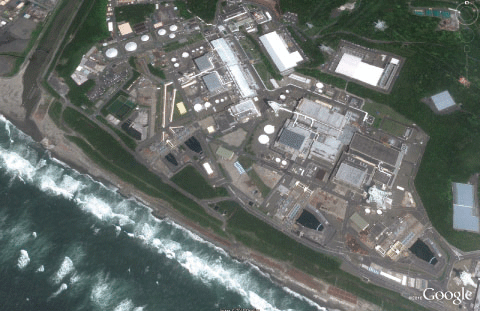 At a press conference on the evening of May 6, Prime Minister Naoto Kan announced an appeal to stop the operation of Chubu Electric's Hamaoka-4 and 5. Chubu Electric held meetings of its board of directors, subsequently decided to accept the request, and from May 13 the reactors were shut down in order. This was the obvious conclusion considering the impending Tokai Earthquake, and we welcome this announcement and the subsequent shutdown.
At a press conference on the evening of May 6, Prime Minister Naoto Kan announced an appeal to stop the operation of Chubu Electric's Hamaoka-4 and 5. Chubu Electric held meetings of its board of directors, subsequently decided to accept the request, and from May 13 the reactors were shut down in order. This was the obvious conclusion considering the impending Tokai Earthquake, and we welcome this announcement and the subsequent shutdown.
At the end of 2008, Chubu Electric decided to decommission Hamaoka-1 and 2. The reason was that it was simply too costly to reinforce the reactors against the revised earthquake standards. However, Chubu decided to continue the operation of Hamaoka-3, 4, and 5.
The long-feared nuclear disaster finally occurred at the Fukushima Daiichi Nuclear Power Station (also referred to as Fukushima I). Although of different sizes and locations within the reactors, hydrogen explosions occurred in Units 1 through 4, scattering huge amounts of radioactivity and contaminating an extensive area. A meltdown occurred in Units 1, 2, and 3, finally admitted by Tokyo Electric on May 25, and still at any moment, a hydrogen explosion could occur again.
While Fukushima I was stuck in the middle of this dangerous situation, Chubu Electric's Hamaoka-3 was undergoing scheduled maintenance. On April 28, Chubu Electric announced its "operation target for 2011," which was premised on restarting Hamaoka-3 in July. In response to this, Minister of Economy, Trade, and Industry Kaieda visited Chubu Electric on May 5 and stated that he would not approve a restart of Unit 3 in July.
On March 30, the Ministry of Economy, Trade, and Industry issued emergency safety measures to each electric power company based on the experience of the Fukushima nuclear disaster. The published details included the following: "Emergency measures are to be taken to prevent the occurrence of damage to the reactor core and spent fuel even when 1) all AC power sources, 2) seawater cooling function and 3) spent fuel pool cooling function are lost due to a tsunami. Even in the event that all three functions are lost, damage to the reactor core and spent fuel must be prevented, and cooling functions must be recovered while containing the release of radioactive material."
In response, on April 20, Chubu Electric announced implementation of the following emergency safety measures: 1) installation of nine emergency power generators, 2) deployment of eight portable power pumps and fire hoses, and 3) deployment of six compressed nitrogen gas cylinders. Countermeasures still to be implemented included 1) the construction of a breakwater wall (a 12 m levee, based on the average sea level of Tokyo Bay), 2) reinforcement of watertight door structures, and 3) the procurement of backup spare parts for the emergency core cooling systems (ECCS).
Ground surveys for the breakwater wall are already underway, and construction will take about three years. Reinforcement of the watertight door structures will also require nearly three years to complete. Regarding these countermeasures, Chubu Electric had planned on carrying out these measures while continuing to operate the reactors.
Based on the experience of the earthquake off the Pacific coast of northeastern Japan on March 11, 2011, will the anticipated height of the wall be adequate if the Tokai Earthquake occurs? Doubts will remain concerning the strength of the wall against a surging tsunami, given the lack of definite information. The feeling that these are makeshift countermeasures is hard to deny. Be that as it may, what will happen if the Tokai Earthquake occurs while the wall is still under construction?
In 2003, concerned local citizens filed a lawsuit in a district court to halt operations of the Hamaoka NPP because of the likelihood of the Tokai Earthquake occurring in the near future. The result of the first verdict in 2007 was that the citizens lost the case, and it is now being contended in the Tokyo High Court.
In 2009, Hamaoka-5 shook abnormally from the Suruga Bay Earthquake. Chubu Electric claimed that, "There is a need to gain a detailed understanding of the mechanism of the amplification of the (main) Suruga Bay Earthquake in Unit 5 since it has not been possible to explain quantitatively the amplification seen in Unit 5 of only the main S-wave ground motion and the high frequency seismic waves in the region of 0.2 to 0.5 seconds."*
In other words, since the mechanism of the shaking in Hamaoka-5 from the 2009 earthquake has yet to be explained, can we have confidence that the reactor will properly withstand the Tokai Earthquake? Doubts are inexhaustible. Furthermore, it has been pointed out that the Tokai Earthquake might occur in conjunction with Tonankai and Nankai Earthquakes. This greatly raises the possibility of increased fault slippage, as indicated in the March 11 earthquake. If this is the case, current expectations of ground movement are inadequate.
It was also natural, to cope with any tsunami that might occur, to halt operations while the breakwater wall is under construction. Again, sufficient deliberations are needed to assess whether or not Hamaoka-3, 4 and 5 can withstand the movements of a Tokai/Tonankai earthquake. It is hard to believe that the Hamaoka Nuclear Plant will be able to resume operations.
Hideyuki Ban (CNIC Co-Director)
*Verification of the impact on the earthquake-resistance safety for verification of the impact on Hamaoka NPP Unit 5 from the Suruga Bay Earthquake (Summary of the content of reports thus far in the joint WG), December 3, 2010.

